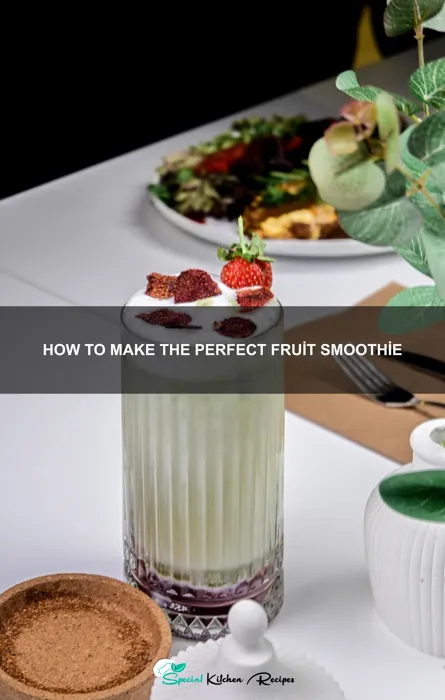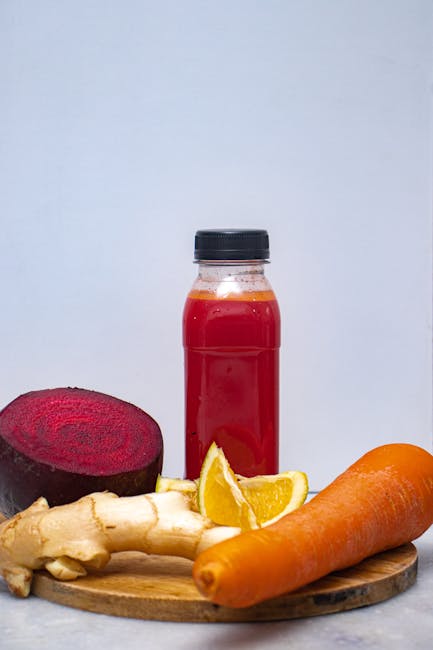The vibrant world of smoothies, a seemingly modern concoction, boasts a surprisingly rich history. While the precise origins remain elusive, evidence suggests that blended fruit and vegetable drinks have existed in various forms for centuries. Ancient cultures likely utilized rudimentary methods to create similar beverages; imagine the resourceful blending of fruits and liquids using mortars and pestles, or perhaps even simple mashing techniques. These early versions, while lacking the sophisticated technology of today’s blenders, served a crucial role in providing nourishment and hydration.
The modern smoothie’s journey to widespread popularity is intrinsically linked to the invention and mass production of the blender in the early 20th century. This technological advancement significantly democratized the process, making the creation of these refreshing drinks accessible to a wider population. The mid-20th century saw the rise of commercial smoothie businesses, further solidifying its place in culinary culture. Today, the global smoothie market is booming, with a projected valuation exceeding $10 billion by 2028, reflecting its enduring appeal across diverse demographics.
Smoothies hold significant cultural relevance, acting as a symbol of healthy eating and active lifestyles in many societies. They’re often associated with wellness trends and are frequently featured in fitness and health-conscious media. From Instagram-worthy creations to quick breakfast options, smoothies have permeated various cultures, adapting to local ingredients and preferences. Interestingly, the average American consumes approximately 150 smoothies per year, highlighting the substantial role this beverage plays in contemporary diets. This indicates not only a preference for convenience but also a growing awareness of the nutritional benefits of incorporating fruits and vegetables into daily routines.
This guide will delve into the art of crafting the perfect fruit smoothie, exploring techniques to achieve optimal texture, flavor, and nutritional value. We will cover everything from selecting the finest ingredients to mastering the blending process, ensuring you can create a delicious and healthy beverage that fits perfectly into your lifestyle. Prepare to unlock the secrets to smoothie perfection!
Ingredients and Measurements
The beauty of a fruit smoothie lies in its adaptability. However, to achieve that perfect consistency and flavor balance, precise measurements are key. This recipe serves as a guideline; feel free to adjust based on your preferences and the availability of your favorite fruits.
Frozen Fruit (1 ½ cups): This is the foundation of your smoothie. The frozen fruit provides the desired thickness and prevents the need for excessive ice, which can dilute the flavor. A mix of fruits is ideal. Consider using 1 cup of berries (strawberries, blueberries, raspberries, or a combination) for sweetness and antioxidants, and ½ cup of a firmer fruit like mango or banana for creaminess and body. Avoid using overly ripe or bruised fruits, as they can impact the overall taste and texture.
Liquid (1 cup): The liquid base thins the smoothie to your desired consistency. You can use milk (dairy or non-dairy such as almond, soy, or oat milk), yogurt (Greek or regular), juice (orange, apple, or pineapple), or even water. Start with less liquid and gradually add more until you reach your preferred smoothness. Overly thin smoothies can lack the satisfying texture we all crave.
Sweetener (Optional, 1-2 tablespoons): While many fruits are naturally sweet, you might need to add a touch of sweetness depending on the fruits you choose and your personal taste. Honey, maple syrup, or agave nectar are excellent options. Start with a smaller amount and adjust to your liking; it’s easier to add more than to take it away. Remember, the natural sweetness of the fruits should be the primary source of sweetness.
Boosters (Optional): Elevate your smoothie with added nutrients and flavor! Consider adding 1 tablespoon of nut butter (peanut, almond, or cashew) for healthy fats and protein, a scoop (around 1-2 tablespoons) of protein powder for a post-workout boost, or a handful of spinach or kale for a hidden veggie boost. Introduce these additions gradually to ensure they complement the overall flavor profile.
Ice (Optional): If your fruit isn’t frozen enough, or if you prefer a thicker, icier smoothie, you can add a few ice cubes. However, remember that too much ice can dilute the flavor and make the smoothie icy and less enjoyable. Start with a small amount and add more as needed.
Important Note: All measurements are approximate. Feel free to experiment with different combinations and quantities to create your perfect fruit smoothie. Weighing your ingredients, especially the fruit, can provide a more consistent result if you are aiming for a specific recipe replication.
Preparation of Fruits and Vegetables (Washing, Peeling, Chopping)
Preparing your fruits and vegetables correctly is crucial for a delicious and safe smoothie. Begin by thoroughly washing all produce under cold, running water. This removes dirt, pesticides, and any surface bacteria. Scrub firm fruits and vegetables like apples, carrots, and potatoes with a clean vegetable brush to dislodge stubborn soil.
Next, consider peeling. While some recipes call for leaving the skins on for added fiber and nutrients (e.g., bananas, mangoes), others benefit from peeling. For example, oranges and kiwis often have a bitter pith that’s best removed. Use a vegetable peeler for efficiency. If using a citrus fruit, remove any white pith as it can impart a bitter taste to your smoothie.
After washing and peeling, it’s time to chop. The size of your pieces will depend on your blender’s capabilities. For most blenders, cutting fruits and vegetables into roughly 1-inch pieces is ideal. This ensures even blending and prevents larger chunks from getting stuck. Avoid over-chopping; small pieces will lead to a smoother texture, but excessively small pieces can make the blending process too long and potentially cause the smoothie to heat up.
For example, if you’re making a smoothie with 1 cup of strawberries, wash them thoroughly, remove the green tops, and then slice them in half or into quarters, depending on their size. Similarly, for 1 medium-sized banana, peel it and slice it into 1-inch thick rounds. If using a harder fruit or vegetable like a frozen mango, you may need to chop it into smaller pieces (approximately ½ inch) for easier blending. Always use a sharp knife for efficient and safe chopping. Keep your cutting board clean and organized to prevent cross-contamination.
Remember that the quantities you chop will depend on your recipe. A good rule of thumb is to aim for roughly equal parts of fruits and other ingredients (such as yogurt or liquid) to achieve a balanced and flavorful smoothie. Proper preparation ensures a consistent texture and maximizes the flavor potential of your ingredients. Always prioritize safety by using sharp knives and keeping your workspace clean.
Finally, before adding your prepared ingredients to the blender, consider pre-freezing some of the fruits and vegetables, particularly if your recipe contains a high proportion of liquid ingredients. This will help create a thicker, colder smoothie.
Liquid Selection and Measurement
Choosing the right liquid is crucial for achieving the perfect smoothie consistency and flavor profile. The liquid you select will significantly impact the texture, from thick and creamy to thin and refreshing. Avoid using too much liquid, as this can result in a watery, unappealing smoothie. Conversely, too little liquid will create a thick, difficult-to-blend mixture.
The most common liquid choices include water, milk (dairy or non-dairy), and fruit juice. Water provides a neutral base, allowing the fruit flavors to shine. It’s a great option for calorie-conscious individuals. Use approximately 1/2 cup to 1 cup of water, depending on the desired consistency and the amount of other ingredients.
Milk, both dairy and non-dairy varieties (almond, soy, oat, etc.), adds creaminess and richness. Dairy milk contributes a higher fat content, resulting in a thicker, more decadent smoothie. Non-dairy alternatives offer a variety of flavor profiles and nutritional benefits. Use the same amount as water – 1/2 cup to 1 cup – adjusting based on your preferred thickness and the type of milk used. For example, thicker milks like coconut milk may require less liquid overall.
Fruit juice adds sweetness and intensifies the fruity flavors. However, use fruit juice sparingly, as it can significantly increase the sugar content. Start with 1/4 cup and add more gradually if needed, tasting as you go. Consider using unsweetened juice options whenever possible to control the sugar intake. The type of juice also impacts the flavor; for instance, using orange juice with berries will create a different flavor profile than using apple juice.
Beyond these common choices, you can experiment with other liquids like coconut water (for added electrolytes), yogurt (for extra creaminess and probiotics), or even iced tea (for a unique twist). Remember to always start with the minimum amount of liquid and add more as needed, blending until you reach your desired consistency. This prevents you from accidentally making a smoothie that’s too thin. Using a measuring cup ensures accuracy and consistency in your smoothie making, leading to more predictable results every time.
Professional Tip: For the most accurate measurements, use a liquid measuring cup and place it on a level surface to ensure accurate readings. Avoid pouring directly from the container; instead, gently pour the liquid into the measuring cup to prevent splashing and inaccurate measurements. This attention to detail will ensure that your smoothies are consistently delicious.
Blending Techniques and Time
Achieving the perfect fruit smoothie texture hinges heavily on your blending technique and the amount of time you dedicate to the process. Rushing the process often results in a chunky, uneven drink, while over-blending can lead to a overly smooth, almost watery consistency and can also heat up the smoothie, diminishing its freshness.
Start with liquids: Begin by adding your liquid base – typically water, milk (dairy or non-dairy), juice, or yogurt – to the blender first. This helps to lubricate the blades and prevents ingredients from sticking to the sides of the blender. Aim for about 1 cup of liquid for a standard 2-cup smoothie, adjusting based on the desired consistency and the type of fruits you’re using. Frozen fruits will require more liquid than fresh ones.
Add your fruits strategically: Next, add your frozen fruits. If using a mix of frozen and fresh fruits, add the frozen ones first, followed by the fresh ones. Avoid overcrowding the blender jar; this can hinder the blades’ ability to effectively blend the ingredients. Start with approximately 2 cups of frozen fruit for a standard smoothie, again adjusting based on your preference.
Pulse and blend: Don’t immediately switch the blender to high speed. Begin by pulsing the blender several times to break down the frozen fruit into smaller pieces. This prevents the motor from straining and helps to create a more even blend. Once the fruit is partially broken down, switch to a higher speed and blend for 30-60 seconds, or until you reach your desired consistency. Listen to your blender; if it sounds strained, stop and use a spatula to push down any ingredients clinging to the sides before resuming.
Adjust as needed: If your smoothie is too thick, add more liquid, a tablespoon at a time, while blending. If it’s too thin, add a few more frozen fruit cubes or a thickening agent like a tablespoon of chia seeds or oats. Taste and adjust sweetness as needed by adding honey, maple syrup, or other sweeteners judiciously. Remember, a little goes a long way.
Over-blending caution: Over-blending can lead to a less desirable texture and can also cause the smoothie to heat up, affecting the flavor and nutritional value. Aim for a smooth but not overly processed texture. If you’re aiming for a slightly chunkier smoothie, reduce blending time. Experiment to find your perfect balance.
Cleaning tip: Immediately after blending, add a little warm soapy water to the blender jar and blend for a few seconds to help loosen any stuck-on ingredients, making cleaning much easier.
Adjusting Consistency (Adding more liquid or frozen fruit)
Achieving the perfect smoothie consistency is key to a delightful drinking experience. Too thick, and it’s difficult to blend and drink; too thin, and it lacks body and satisfaction. This section will guide you on how to adjust your smoothie’s consistency by adding more liquid or frozen fruit, depending on your preference.
If your smoothie is too thick: This is a common issue, often resulting from using too little liquid or too much frozen fruit. The easiest solution is to add more liquid gradually. Start by adding 1-2 tablespoons (15-30ml) of your chosen liquid at a time. We recommend using liquid ingredients that complement your chosen fruits. For example, milk or yogurt adds creaminess, while juice provides a brighter, more vibrant taste. Water is a neutral option, but may result in a less flavorful smoothie. Blend thoroughly after each addition to ensure even distribution and assess the consistency before adding more.
Consider the type of liquid you choose. Thicker liquids like yogurt or full-fat milk will make a more substantial smoothie than water or juice. Experiment with different liquids to find your preferred texture and flavor profile. For instance, adding a tablespoon of nut butter can also add thickness and creaminess, while simultaneously enhancing the flavor.
If your smoothie is too thin: This usually indicates an excess of liquid or insufficient frozen fruit. The solution here is to add frozen fruit. Start by adding 1-2 frozen fruit cubes (approximately 1-2 ounces or 30-60 grams) at a time. Again, blend thoroughly after each addition. The type of frozen fruit matters; firmer fruits like bananas will offer a thicker consistency than berries. Remember that some fruits, like mangoes, are naturally softer and less likely to thicken the smoothie as effectively.
Important Note: Over-adding frozen fruit can make your smoothie excessively thick and difficult to blend. It’s always best to add your liquid and frozen ingredients gradually, blending in between, allowing you to achieve the exact consistency you desire without overdoing it. Patience is key to crafting the perfect smoothie.
Professional Recommendation: Before adding any extra ingredients, taste your smoothie. This will help you determine if the consistency issue is solely a texture problem or if it also requires flavor adjustments. Remember, adjusting consistency is an iterative process. Don’t be afraid to experiment to find what works best for you and your chosen recipe.
Serving Suggestions (Glasses, Garnishes)
The presentation of your fruit smoothie is just as important as its taste! Choosing the right glass and garnish can elevate your creation from a simple breakfast drink to a visually appealing and delightful treat. Consider the smoothie’s color and flavor profile when selecting your serving vessel and garnish.
Glassware Selection: Tall, slender glasses, like highball glasses (8-12 oz capacity), are ideal for showcasing the vibrant colors and layers of your smoothie. Their shape allows for easy sipping and prevents spills. Alternatively, shorter, wider glasses, such as mason jars (16 oz capacity), offer a more rustic and charming aesthetic, particularly suited for thicker smoothies or those with added toppings. For a more sophisticated presentation, consider using elegant stemmed glasses, though these may be less practical for thicker blends.
Garnish Ideas: Garnishes add a final touch of visual appeal and can complement the flavors of your smoothie. A small amount goes a long way; avoid overwhelming the drink. Fresh fruit is a classic choice. A few slices of the fruit used in the smoothie (e.g., a strawberry wedge, a kiwi slice, or a few blueberries) are simple yet effective. Consider using contrasting colors for a more striking visual impact. For instance, a green smoothie might be beautifully garnished with a red raspberry or a few pomegranate seeds.
Other Garnish Options: Beyond fresh fruit, consider other options. A sprig of fresh mint or basil adds a refreshing aroma and complements many fruit combinations. A sprinkle of shredded coconut adds texture and tropical flair to smoothies with mango, pineapple, or banana. A dusting of cocoa powder or cinnamon can enhance the visual appeal and flavor of chocolate or banana smoothies. For a luxurious touch, consider a small dollop of whipped cream or a drizzle of honey, but use sparingly.
Important Considerations: Avoid overly complicated garnishes that might detract from the smoothie itself. Keep it simple and elegant. Ensure your garnishes are fresh and of high quality. Add your garnish just before serving to prevent wilting or discoloration. The garnish should enhance, not overpower, the overall sensory experience of the smoothie.
Professional Tip: Consider the overall theme or occasion when choosing your glassware and garnish. A simple smoothie for a quick breakfast might require a less elaborate presentation than a smoothie served at a brunch party.
Recommendations
For the perfect fruit smoothie experience, consider these recommendations:
Serving Suggestions: Enjoy your smoothie immediately for the best flavor and texture. It’s delightful as a refreshing breakfast, a healthy midday snack, or a post-workout recovery drink. For a more decadent treat, consider adding a dollop of Greek yogurt or a sprinkle of granola for added creaminess and crunch. You can also pour it into a popsicle mold for a fun frozen treat. For a visually appealing presentation, garnish with fresh fruit slices or a sprig of mint.
Storage: Leftover smoothies should be stored in an airtight container in the refrigerator for up to 24 hours. However, the texture and flavor may change after a few hours, so consuming it fresh is strongly recommended. Do not refreeze a thawed smoothie.
Complementary Dishes: Your fruit smoothie pairs well with a variety of breakfast and brunch options. It complements lighter fare such as whole-wheat toast with avocado, a small bowl of oatmeal, or a light breakfast pastry. For a more substantial meal, consider pairing it with scrambled eggs or a small serving of yogurt parfait. It can also be a great accompaniment to a light lunch salad.
Nutritional Information (Approximate, varies based on ingredients): A typical fruit smoothie (using a combination of fruits, vegetables, and liquid) may contain approximately 200-300 calories. The nutritional content varies greatly depending on the ingredients used. Generally, you can expect a good source of vitamins, minerals, and fiber, contributing to your daily recommended intake of these essential nutrients. Always check the nutritional information of your specific ingredients to calculate the precise calorie and nutrient count of your smoothie.
Important Note: While fruit smoothies are generally healthy, be mindful of added sugars from ingredients like honey or syrups. Adjust the sweetness to your preference and try to prioritize natural sweetness from the fruits themselves. If you have any dietary restrictions or allergies, always check the ingredients and adjust the recipe accordingly.





